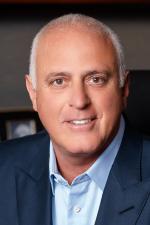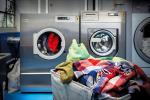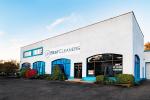HUNTINGTON WOODS, Mich. — The U.S. Environmental Protection Agency (EPA) recently announced new regulations aimed at eliminating or significantly reducing consumer and commercial use of two solvents: trichloroethylene (TCE) and perchloroethylene (“Perc” or PCE). TCE is a degreasing agent most commonly used in manufacturing, while PCE is used in cleaning, degreasing and many industrial settings.
Introduced during the final months of the Biden-Harris administration, these new risk-management rules are the result of decades of advocacy from environmental and health groups, who have pushed for stricter regulations on these chemicals due to their risks to human health and the environment. Headlines have repeatedly linked the new regulatory action to our industry — and it’s true that historically, both of these chemicals have been used in the drycleaning sector. However, nearly all dry cleaners had moved away from these solutions long before this latest mandate was put in place, demonstrating the sector’s long-standing commitment to safety and sustainability.
Yet despite the widespread adoption of more human- and eco-friendly products and processes, misconceptions about the industry persist. The recent news coverage has only exacerbated this issue, leaving cleaning professionals with a public perception challenge on their hands.
A Voluntary Transition
As the risks associated with TCE and PCE have come into sharper focus over the last few decades, many business owners have proactively made the switch to safer, more sustainable products. Once a staple in drycleaning operations, TCE was largely retired around 50 years ago. Meanwhile, the majority of operators have gradually phased out PCE as alternative solutions emerged.
This transition went beyond simply introducing new cleaning agents. It meant overhauling processes and infrastructure. For instance, one major concern with PCE was its potential to seep through concrete floors, posing a risk to soil and groundwater. As awareness of this issue grew, operators took action — sealing floors, installing air monitoring systems and adopting stricter practices for the disposal of solvents.
Similarly, drycleaning facilities traditionally utilized transfer systems, where garments were cleaned in one machine and then moved to another for drying. Since workers had to handle the garments during the transfer between units, this method increased chemical exposure.
Mindful of this, businesses began adopting dry-to-dry systems in the 1990s. With this approach, washing, drying and solvent recovery take place within a single machine — eliminating the need for manual transfer and thereby creating a safer work environment.
These are just two of the many ways dry cleaners have made proactive shifts to their processes and facilities in the interest of people and the planet. But although these changes have been widely embraced, they didn’t come without their challenges.
The Price of Progress
While almost all dry cleaners have now shifted away from PCE, the transition required considerable investment.
For example, one of the biggest advancements within the industry has been the emergence of professional water-based cleaning, commonly known as “wet cleaning.” This method allows dry cleaners to treat garments with water, reducing dependence on chemical solvents. Meanwhile, alternative cleaning agents, such as hydrocarbon-based solutions and liquid silicone, are safer for workers and gentler on fabrics — allowing operators to reduce their environmental impact without sacrificing quality and performance.
However, upgrading to modern drycleaning machines can be a costly undertaking. Units designed for wetcleaning methods and alternative solvents can command prices of more than $100,000. As a result, some older operators — especially those with limited resources — are still in the process of replacing outdated equipment and systems.
This is an area where a franchise partner can be particularly beneficial. Larger franchise networks have deeper pockets, stronger vendor relationships and better negotiating power. That means they can often provide extensive resources, guidance and access to equipment and technology, helping individual operators stay compliant and competitive.
Shifting the Narrative
Making the switch to new processes and products was an important evolution for our industry. Our next challenge will be shifting the narrative. The EPA announcement gave many consumers the wrong impression, leading them to assume that dry cleaners are still heavily dependent on hazardous chemicals. This has put business owners in the position of having to defend their products and procedures.
To change public perception, drycleaning professionals need to take control of the narrative. Operators should use platforms such as their websites and social media, along with prominent in-store signage, to educate consumers on the safety and sustainability of their methods. Clear messaging about the industry’s commitment to safe, eco-friendly alternatives can help to reassure customers and build trust.
Customer-facing employees also have a key role to play in bridging the gap between assumption and reality. Business owners should equip their staff with the knowledge to address customer concerns effectively. At the same time, customers should feel empowered to ask about the products and techniques used in their garment care. Creating more opportunities for open dialogue will not only dispel outdated misconceptions but also strengthen consumer confidence in the industry.
Safe, Sustainable and Innovative
For most modern drycleaning shops, the EPA’s new regulations will have little effect on their operations. However, now more than ever, business owners must be intentional about their messaging, taking steps to educate the public on their eco-friendly practices and the progress they’ve already made toward a safer, more sustainable future.
The EPA’s recent directive is not a catalyst for change but a reflection of the measures a majority of dry cleaners have already implemented. As decades of progress have demonstrated, our industry doesn’t wait for mandates to act. In fact, dry cleaners have led the charge in embracing cleaner, greener technologies.
The truth is that risk mitigation, environmental stewardship and innovation have played a fundamental role in our industry’s evolution — and will continue to do so for years to come.
Have a question or comment? E-mail our editor Dave Davis at [email protected].










